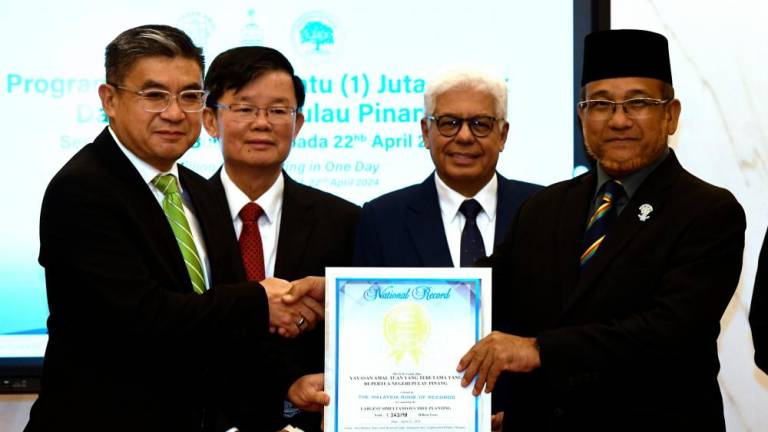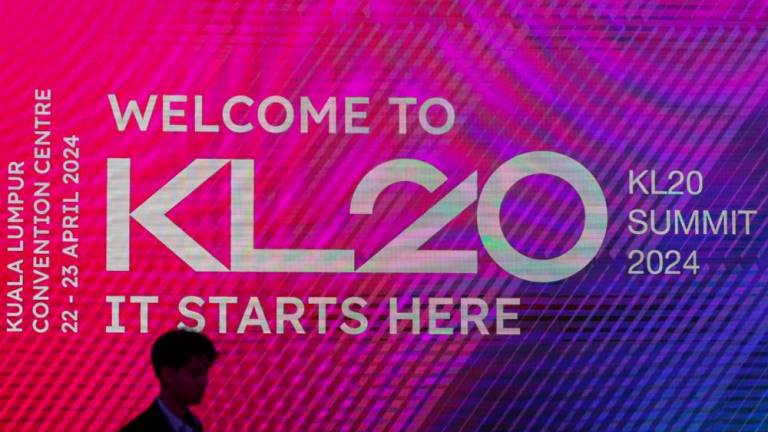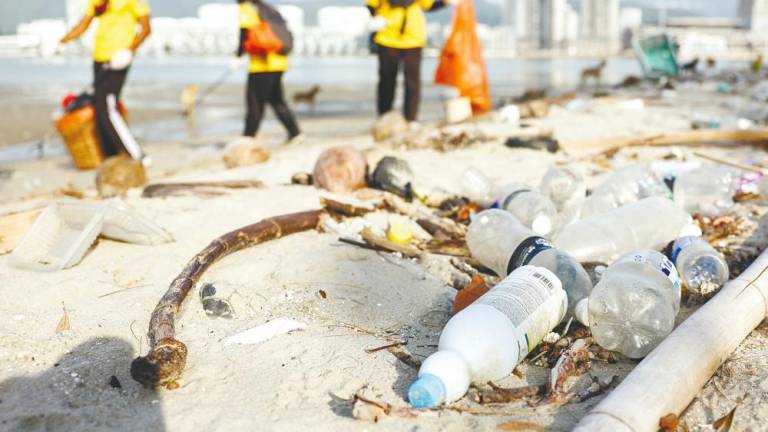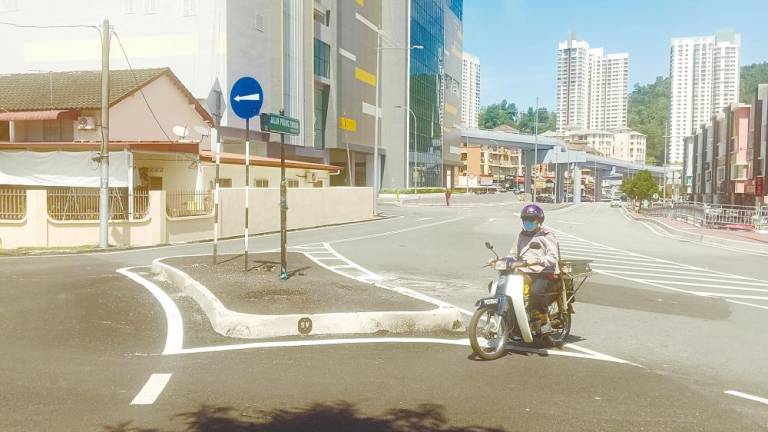WHEN launching programmes, no effort and money is spared by the government. Elaborate shows, choreographed routines and synchronised spectacles are common.
There was no exception when the “Satu Murid Satu Sukan” (one student, one sport) policy was launched in 2011 aimed at producing all-rounded students with a balanced academic-sports background.
It was then argued that the implementation of this policy as such would, among others, encourage healthy competition among students, promote physical and moral values, provide an avenue for integration, and above all, encourage a healthy lifestyle.
The policy made it mandatory for every student from Year Four to Six to participate in at least one sport. However, those in pre-school and lower primary were encouraged to participate in sports based on the ability of their respective schools to facilitate the process.
A comprehensive module that served as the guideline for the schools to implement this policy was also introduced.
Ten years on, one would have expected some results for the time, effort and money pumped into this programme.
The policy is now gathering dust in the cupboards of most schools. It appears to have been an exercise in futility with little to show.
The reasoning is that there were no incentives from all stakeholders resulting in lacklustre efforts and in some cases, the programme never took off.
The programme was supposed to have been the backbone to strengthen the quality of national athletes in the country, but sad to say, nothing much has materialised.
Coaches and sports officials contend that this programme has not produced the desired results to identify and nurture young talents.
Allan Neto, a hockey coach with 11 years of experience says priority was not given to the physical development of students at the grassroots, a basic requirement for sports development. The problem has further festered because of time constraints where games were cut short, say for football from 90 to 60 minutes, where physical endurance was never tested.
“The shortened period plus smaller playing fields in most cases (as dictated by the policy), made it impossible for physical development,” said former national hockey player and coach, Sivabalan Selvadurai.
Both coaches suggested that authorities at every level – district, state and national – should play an active role in promoting sports at the grassroots levels.
Schools, districts, and state-run programmes should seek partnerships with private companies if they lack the funds to come up with a wholesome programme.
They cited the “1Mas Hockey Programme” as an exemplary programme which successfully managed to help the progression of several grassroots hockey players into the national team. Unfortunately, the programme has been discontinued.
Another grouse is that students at a young age are not provided or taught basic skills. Lim Zheng Han, a sports science graduate said the reason athletes remain stagnant at a young age is largely due to the poor emphasis on the integration of sports science in Malaysian sports.
“We have many talented teenage athletes who failed to unleash their full potential as they have not been holistically guided. There are not enough sport science facilities available in the country, but the importance of sports science has not been appreciated, let alone accepted,” he said.
Coach Adam Nizam lamented that insufficient attention is paid to women’s sports. He conducted a poll on Twitter via the Brand New Waves and Bahas Bola platforms which revealed the reasons why Malaysian women abstain from active participation in sports.
Social anxiety (a result of the cat-calling culture), low or poor access to sports in general, and the lack of exemplary female sports role models were cited as the reasons.
Thus, he felt that there was a need for a cultural and mindset change within the communication channel of the Youth and Sports Ministry in addressing these problems.
“The Sports Ministry does not communicate to all Malaysians. All of their social media campaigns and messaging are primarily targeted at the Malay community,” he said.
But these aside, are there enough facilities for grassroots development or for that matter, the “one pupil, one sport” policy? Most schools do not have indoor courts save for a multi-purpose school hall.
For sports to succeed, there has to be a nexus between schools and the local authorities who are supposed to fund sports and recreational facilities for residents.
Furthermore, policies on planning in development do not prioritise sports and recreation. There have been instances when open spaces which often double up as recreational sports making way for development such as condominiums.
Besides, the compulsory allocation of space for recreation has often been ignored.
Even then, the facilities which are provided by local authorities appear skewed towards the urbanites, disregarding those in the outskirts, most of whom cannot afford the luxury of renting private facilities.
For example, the Petaling Jaya City Council lists 74 “facilities” on its website. However, not all can be used for sports. Is it justifiable having about 50 badminton courts for a population of nearly 700,000?
Similarly, it has only a public swimming pool, the Kelana Jaya Municipal Pool. Is this adequate for a country that has produced Olympic divers? This is despite the council allocating RM1.3 million for sports development.
Ironically, former education minister Maszlee Malik, during his year-long tenure, suggested building swimming pools in secondary schools, but this was laughed at and did not take off.
However, are public sports amenities provided by the government sufficient and affordable? A quick check on the cost and availability of sports venues in the Klang Valley indicates that one needs a deep pocket to train regularly.
For example, the rental of a badminton court for an hour could set one back an average of RM20. The figures were obtained from multiple sources, including the official government website www.stadium.gov.my, and visits to the venues.
While the well-heeled are willing to spend large sums of money to enrol their children in sports academies and centres, which are supervised by qualified coaches, the children of the man-in-the-street cannot afford such extravagances. They are left to do everything on their own although they may be talented.
Even if costs are shared in a team sport like football, it would cost at least RM10 an hour for the rental of the field. This does not include the cost of buying and maintaining the necessary sports gear.
However, in the case of badminton, it could be much more. To play badminton, it would cost about RM30 each for rental of courts and shuttlecocks. A rough estimate of the cost for a single person to engage in sports is around RM8-RM30 per hour.
This does not include the cost of buying and maintaining the necessary equipment needed to play the sport.
A top-of-the-range racquet costs about RM500 but there are less costly ones. The cost of a dozen goose-feather shuttlecock ranges from RM35 to RM150, depending on the quality. Shoes cost between RM55 and RM500. Just like any product, the higher the price, the better the quality.
Therefore, a one-time cost of purchasing a complete set of badminton equipment ranges between RM140 and RM1,150.
Herein lies the biggest obstacle and problem, funding. In Budget 2020 announced by Lim Guan Eng (then finance minister), the government allocated RM671 million for sports development.
During the tabling of Malaysia’s 2020 budget, Lim said: “Sports can unify the nation and the government is providing RM299 million for sports programmes, as well as to fix and recover all existing infrastructure. This includes upkeep of the youth and community sports complexes throughout the country”.
In addition to that, in Budget 2021 presented by Finance Minister Datuk Seri Tengku Zafrul Tengku Abdul Aziz, the government allocated RM103 million to build, upgrade and maintain all sports facilities nationwide.
This is despite the country facing the Covid-19 pandemic.
The minister said, “For the development of high-performance sports, the government will provide RM55 million for the development of hockey, rugby, badminton, cycling, development of women athletes, including a RM15 million allocation for e-sports development.”
But how does the money reach the grassroots and who accounts for the money? The focus seems to be on winning Olympic medals and international tournaments without investing in grassroots sports development, where the future champions are going to come from.
Millions are being spent in the name of sports and development, but is there anything left for the grooming of young talent?
Comments: letters@thesundaily.com












